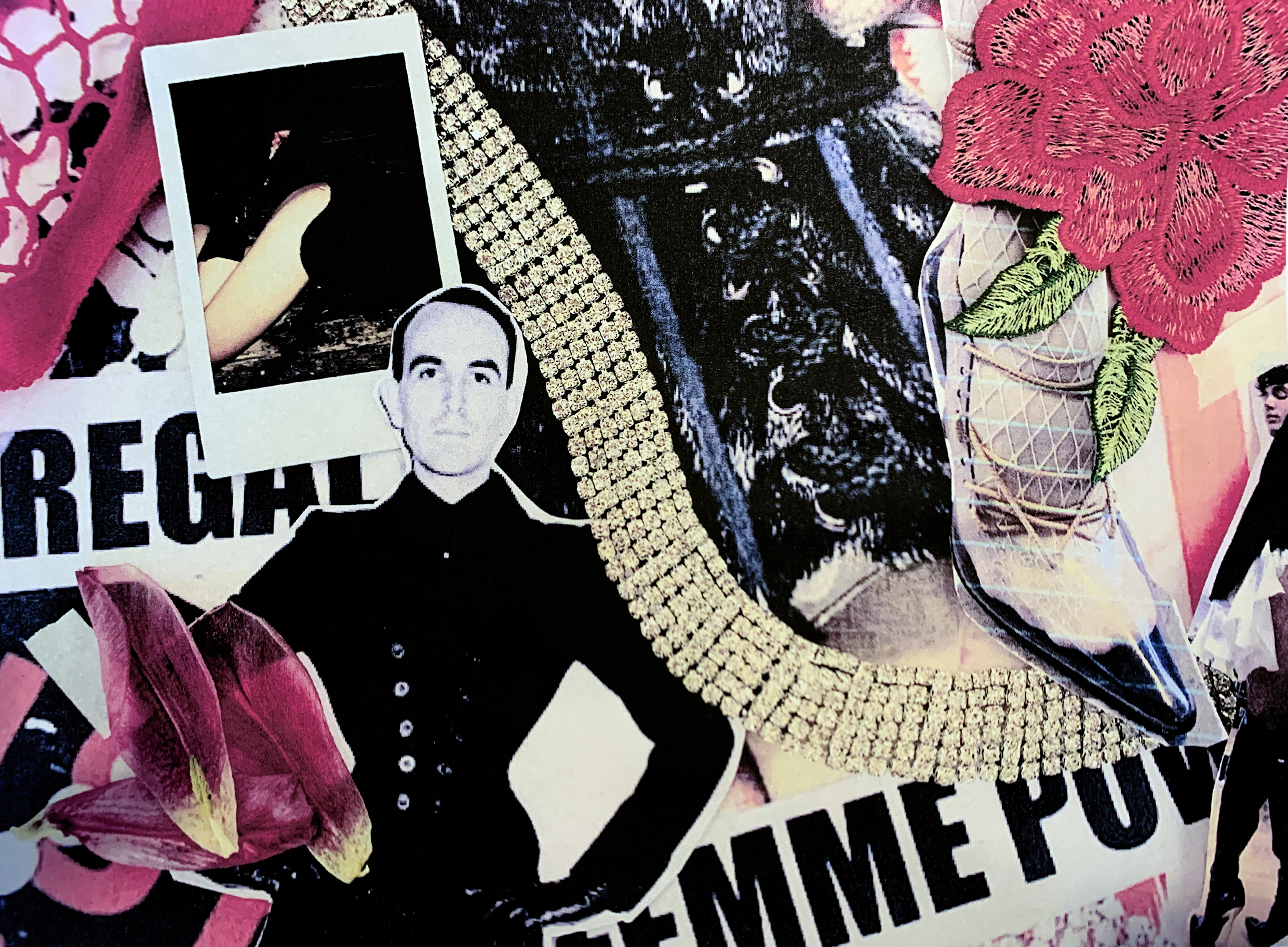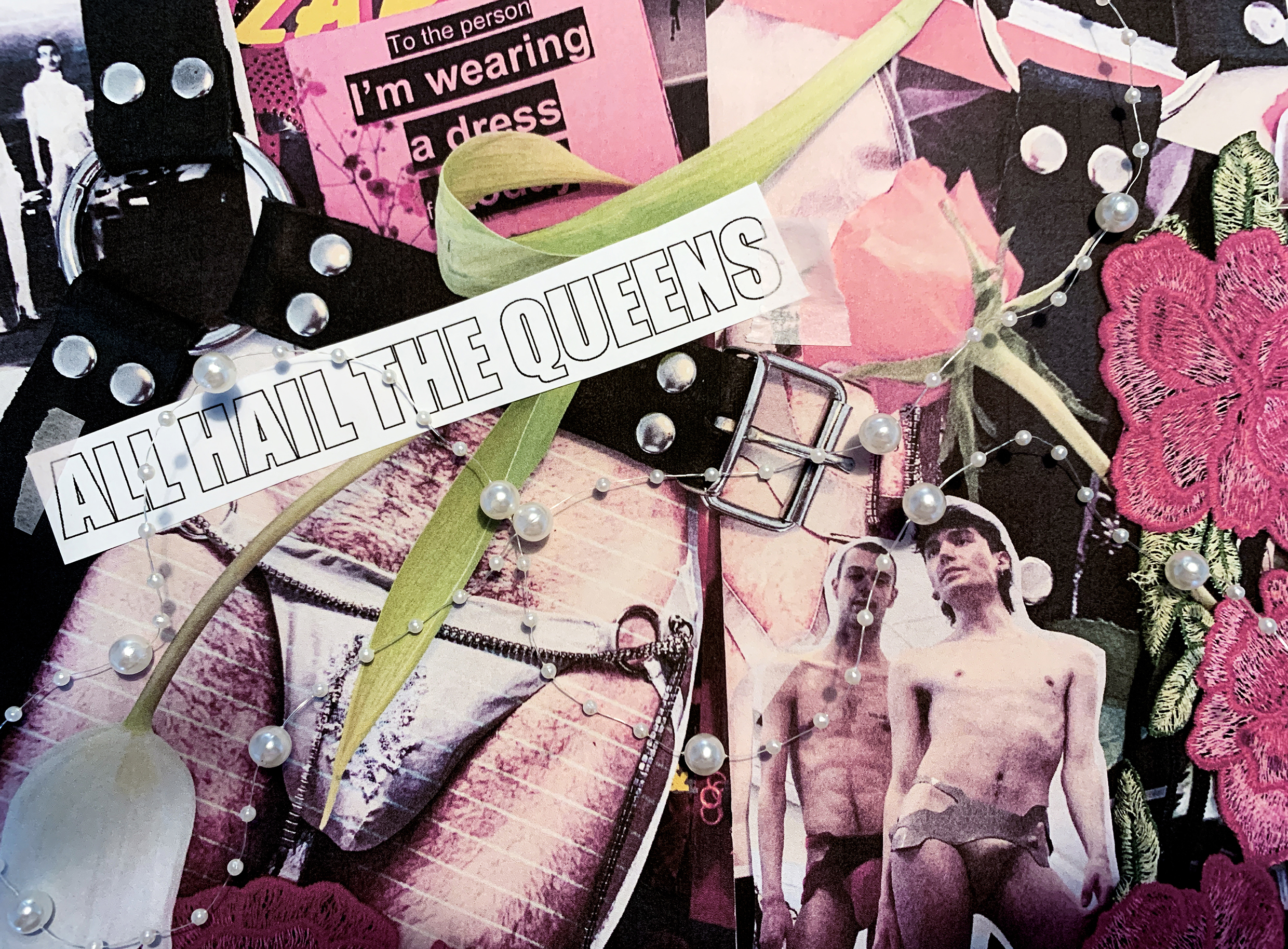Collages by Alecsander Rothschild based on “Love Letter”, his graduate collection at Beckmans College of Design.



In his graduate collection “Love Letter” from Beckmans in 2017, Alecsander Rothschild pushed for more inclusiveness in fashion, in particular regarding gender representation: “I am dreaming of a world, where individual expression is considered a necessity for one’s existence and personal growth, regardless of masculinity and femininity.” In a visual strategy to confront the heteropatriarchy, he claimed space for a “dominant femininity and the naked skin”, literally by making garments with a lot of volume and exposing strategic body parts. For this project, he is expanding on the same discussion with a series of collages which relate to “Love Letter” but put femme energy at the front: a femininity with a more “masculine” stand. He believes that non-binary fashion is important and that “masculinity and femininity are far more complex ideas than they are given credit for in many discourses”. Currently, Alecsander Rothschild is preparing for an MA degree in menswear at Central Saint Martins in London.
In the images you see a combination of pictures shot by me, featuring parts of my graduate collection “Love Letter”. To show the context and environment of the collection, where it comes from, there are also references and objects juxtaposed with my pictures.
Aesthetically, I choose to work in the form of collage because of how the images start to relate to each other in a personal and fluid way, they kind of merge into something else. Collages also have a quite defiant expression as they are messy in a way that isn’t chic but more childish and they challenge what’s supposed to be “beautiful”, although in this case the content – pearls, makeup and flowers for example – can be read as extremely chic and glamorous.
The intention behind the collages is to show my graduate collection in its purest form – to display a femme identity, which I define as something very dominant. It’s a kind of femininity that takes a more “masculine” stand if you will, showing that masculinity and femininity are far more complex ideas than they are given credit for in many discourses.
Non-binary fashion is important. I have never been able to buy proper heels for myself (hence my obsession with them) or buy any feminine, expressive fashion for myself as it has never been available for a person with my body-size. I believe that these are huge factors in why the work I present in my collections is so “feminine”. It has been right in front of me all my life, but at the same time beyond my reach, so I am craving it like crazy and I feel a lack of this type of femme masculinity in fashion.
I think there is a good progression in fashion, with more companies catering for the non-binary consumer. I think they are seeing a shortage of non-binary fashion and that many queer people in the Western world actually have a lot of cash to spend. Which is where the problematic parts also surface, because the intention isn’t entirely pure. Companies are seeing the spending power of the queer audience, and capitalise on the queer community/pink economy; that is why we see so many queer things advertised in unrelateable and appropriating ways.
I believe it is important to be sensitive to various walks of lives and especially minority walks of life. But there isn’t one way to do things, nor should there be – explore as much as possible and keep other people involved in your work so you don’t stagnate in your thought process. Encourage the conversation through all stages of your work but keep it personal – speak for yourself and not others. There will always be people who can relate to your experience and therefore your work and that’s enough. You don’t need everyone to understand. Finally, I want to add something that my tutor Reba Maybury said at CSM: “The only originality you possess is your own experience.”